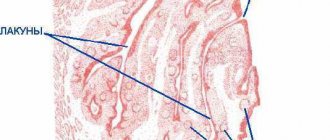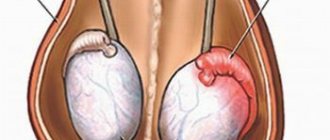Epidemiology
Mesangioproliferative glomerulonephritis is recorded in 5-10 cases out of 100 of idiopathic nephrotic syndrome in adults. Among patients with membranoproliferative glomerulonephritis, an equal proportion of women and men. Membranous nephropathy usually appears in people between 30 and 50 years of age. It is twice as common among men. It is found in 30-40% of cases of nephrotic syndrome in adults.
Minimal change nephropathy is found mainly in children aged 6 to 8 years. In 80% of cases, it is this form that causes nephrotic syndrome in children. Fibrillary immunotactoid glomerulonephritis accounts for less than 1% of all cases of glomerulonephritis in adults.
Pathogenesis
The pathogenesis is similar to that of acute glomerulonephritis. The cells of the inflammatory infiltrate and the glomerular cells secrete various mediators. Complement is activated, cytokines, chemokines, and growth factors are produced. Proteolytic enzymes and oxygen radicals are produced, pro-inflammatory prostaglandins are produced, and the coagulation cascade is activated.
In the processes of accumulation and changes in the structure of the extracellular matrix, the activation and proliferation of mesangial cells are of primary importance. Non-immune factors are also important for further progression of the disease. We are mainly talking about changes in blood dynamics (intraglomerular hypertension and hyperfiltration). The progression of glomerulonephritis is also associated with tubulointerstitial changes. Proteinuria is of great importance here. Excessively filtered proteins cause activation and release of vasoactive and inflammatory factors by tubular epithelial cells. They cause an inflammatory interstitial reaction, pronounced accumulation of fibroblasts, etc.
Hyperlipidemia, which is essential for nephrotic syndrome, affects the development of glomerulosclerosis. Intercurrent recurrent urinary tract infections can greatly influence the deterioration of kidney function. In recent years, the importance of such factors as obesity in the pathogenesis of chronic glomerulonephritis has been considered. It is also an independent etiological factor for kidney damage.
At the beginning of the development of obesity, a state of relative oligonephronia develops, resulting in an increased filtration load of the glomeruli. Hyperfiltration is initiated and maintained by metabolites and hormones from the adipose tissue itself.
Pathogenesis and pathomorphology of fibroplastic glomerulonephritis
The severity of fibrotic processes is significant: synechiae or fusion of vascular lobules with the capsule are formed, and the capillary loops of the glomerulus are sclerosed. The progressive accumulation of extracellular matrix in the mesangium and beyond causes sclerosis of the glomerular capillaries. When the integrity of the capillary walls is disrupted, plasma components penetrate into the extracapillary space, and the resulting fibrin provokes the development of sclerotic changes.
Features of treatment
Regardless of the form of glomerulonephritis, all treatment is carried out exclusively in an inpatient setting. The length of hospitalization depends on the severity of the individual case.
The treatment regimen is determined by the attending physician. Here is just one of the possible options:
- Diet No. 7.
- Bed rest.
- Antibacterial therapy (erythromycin, oxacillin + ampicillin).
- Taking prednisolone and non-hormonal drugs to correct immunity.
During treatment, various drugs are also used to eliminate associated symptoms. These are diuretics to eliminate swelling, drugs to lower blood pressure, and anti-inflammatory drugs.
Medical recommendations are standard: exclude spicy, salty foods from the diet, refrain from smoking and drinking alcohol. You need to monitor your weight, periodically loading yourself with physical exercise.
Prevention
Glomerulonephritis can be prevented by following several effective preventive measures. Here are the main ones:
- Engage in an active hobby (especially if your job involves sitting for long periods of time).
- Stop or significantly limit alcohol consumption and smoking.
- Minimize the consumption of salty foods.
- Avoid hypothermia.
- Constant control of blood sugar (diabetes).
Glomerulonephritis is a progressive disease, the course of which can be stopped if the cause of the pathology is determined in time. Moreover, the overall picture is very favorable: most cases end in complete recovery (in about 30% of cases the disease progresses to the chronic stage).
Types and symptoms of the disease
Considering the clinical manifestations, glomerulonephritis occurs:
- Latent. This type is found in most cases. External signs are mild - the appearance of moderate swelling, and a slight increase in blood pressure. It can be determined by the results of laboratory tests, that is, by a general urine test it can be determined that protein, red blood cells, and white blood cells are increased.
- Hematuric. This form can be found in rare cases, no more than 4% of all cases. If we talk about external signs, then redness of the urine is observed. When taking a urine test, it can be revealed that the changed red blood cells have increased.
- Hypertensive. This type of glomerulonephritis occurs in approximately 15% of cases. The following external signs of the disease appear: blood pressure constantly rises, much more urine is released per day, and the urge to empty the bladder at night becomes more frequent. When submitting urine for a general analysis, protein and altered red blood cells can be detected. In addition, the density of urine decreases.
- Nephrotic. This type occurs in 30% of all cases. The following external signs appear: blood pressure rises, swelling appears. Also, much less urine begins to be released per day. Based on the results of laboratory tests, it can be revealed that there has been an increase in urine density and the amount of protein. A biochemical blood test can determine that total protein has decreased and cholesterol has increased.
- Mixed (nephrotic-hypertensive). With this form of glomerulonephritis, similar symptoms appear, which are inherent in the nephrotic and hypertensive types of the disease.
What are the stages of the disease?
The first stage of glomerulonephritis is called the compensation stage, or initial stage. During this period, the functioning of the kidneys is not impaired. If we talk about external signs, blood pressure increases slightly and moderate swelling appears. A urine test reveals some protein and altered red blood cells.
The second stage is the stage of decompensation. At this stage, the disease progresses, kidney function is impaired, and chronic renal failure develops. As for external signs, the patient notices the appearance of headaches, nausea, which ends in vomiting. This is due to the fact that nitrogenous compounds accumulate in the blood. Also, blood pressure increases significantly. This is a consequence of the fact that water is retained in the body, electrolyte balance and hormonal levels are disrupted.
In addition, at the second stage of the disease, polyuria develops, that is, much more urine is excreted per day. The reason is that urine is not concentrated by the kidneys. With polyuria, the skin becomes dry, the patient is constantly thirsty, and there is weakness and headache.
If we talk about laboratory signs during the stage of decompensation, then protein and red blood cells increase, urine density decreases, and there are casts in the urine (they are hyaline or granular).
The third stage is the most severe. It is called uremia. A characteristic sign is the final loss of the kidneys’ ability to maintain normal blood composition. The blood is saturated with nitrogenous toxic compounds, which constantly accumulate. This refers to the entry of urea, creatinine, and residual nitrogen into the blood. This intoxication is accompanied by a number of the following symptoms:
- The appearance of general weakness.
- Constant severe headaches.
- Air may be released from the mouth, which smells like ammonia.
- Consciousness is confused.
- The patient may fall into a coma.
Why does chronic glomerulonephritis occur?
Considering the above, we can conclude that the functioning of the kidneys is disrupted due to the inflammatory process that develops in the renal glomerulus. There are a number of reasons why this inflammatory process occurs:
1. General infectious disease. Such diseases include:
- Sore throat.
- Scarlet fever.
- Septic condition.
- Pneumococcal pneumonia.
- Meningococcal infection.
- Hepatitis B.
- Pig.
- Chickenpox.
- An infection caused by the Coxsackie virus.
2. Rheumatic or autoimmune disease. Such diseases include:
- Systemic lupus erythematosus.
- Systemic vasculitis.
- Septic vasculitis.
- Pulmonary-renal syndrome, which is hereditary.
3. If vaccination was carried out or blood components were transfused.
4. The occurrence of intoxication due to various substances:
- Organic solvents.
- Alcoholic drink.
- Mercury.
- Lead.
5. Conducting radiation therapy, the presence of radiation sickness.
6. Severe hypothermia or weakened general resistance of the body.
The manifestation of glomerulonephritis occurs several weeks after the body is affected by one of the above factors.
Possible complications
As a rule, complications are caused by chronic glomerulonephritis. The consequences can be quite serious:
- Kidney failure.
- Serious heart problems.
- Uremic coma.
- Nephritic encephalopathy.
Glomerulonephritis is a disease that often leads to early disability. It is important to begin conservative treatment when the first signs of the disease are detected.
At the end of therapy, sanatorium treatment is recommended. You need to be regularly monitored by a specialist.
How is chronic glomerulonephritis diagnosed?
The leading criteria for diagnostic measures are the results of laboratory tests. When collecting anamnesis, it is necessary to take into account the presence of chronic infection, acute glomerulonephritis, and systemic disease.
Based on the results of a general urine test, it can be revealed that red blood cells, leukocytes, casts, protein have appeared, and the specific gravity of urine has changed. To assess how the kidneys function, the patient is prescribed the Zimnitsky and Rehberg test. Hypoproteinemia and dysproteinemia, hypercholesterolemia, an increase in the titer of antibodies to streptococcus, an increase in the level of IgA, IgM, IgG are detected.
Taking into account the clinical variant of the disease, differential diagnosis is carried out. This is necessary to exclude:
- Chronic pyelonephritis.
- Nephrotic syndrome.
- Polycystic kidney disease.
- Kidney stone disease.
- Kidney tuberculosis.
- Amyloidosis of the kidneys.
- Arterial hypertension.
To establish the histological form of chronic glomerulonephritis and exclude pathology that has similar symptoms, a kidney biopsy is performed. Then the resulting tissue sample is examined morphologically.







